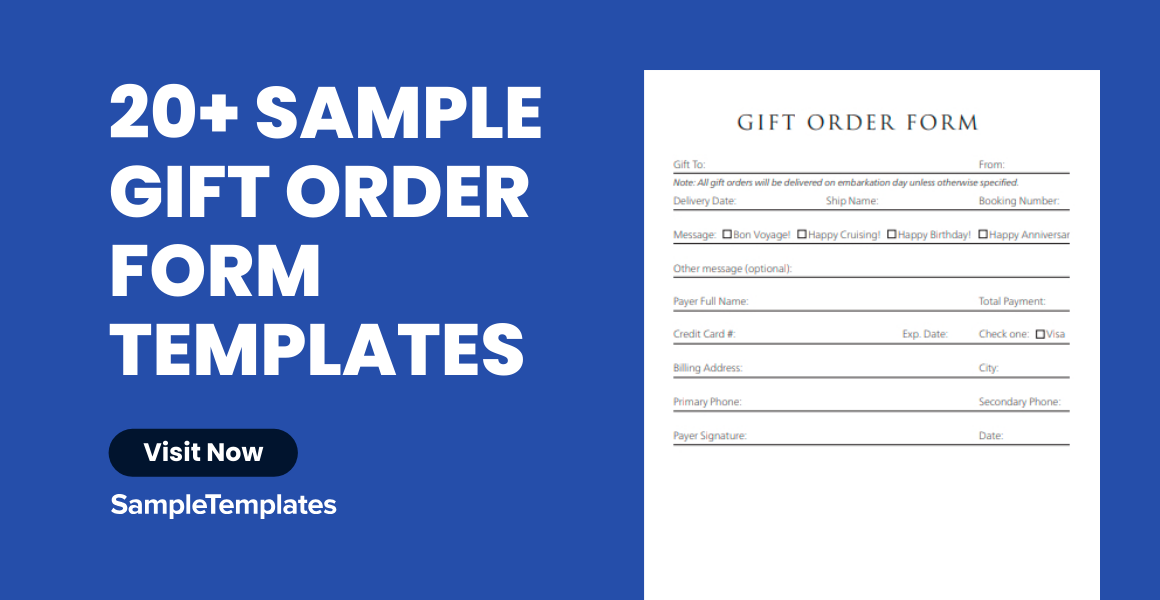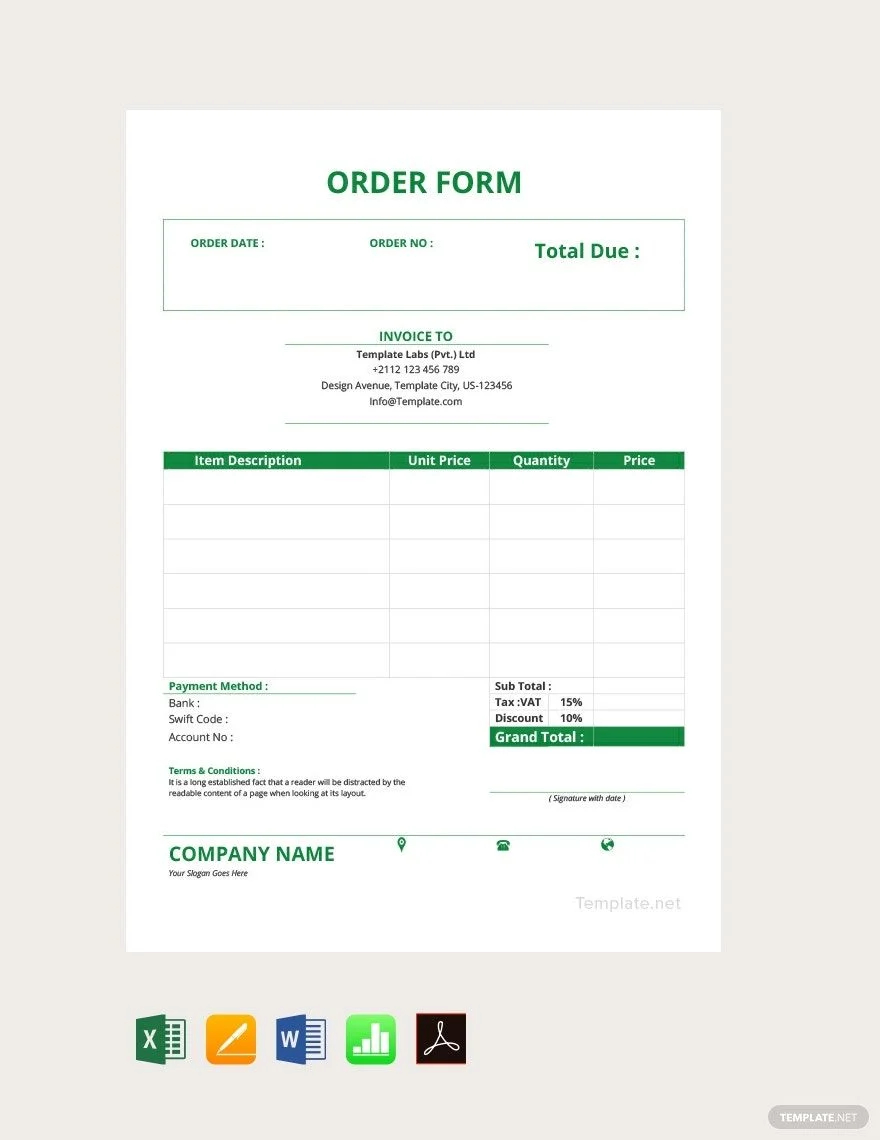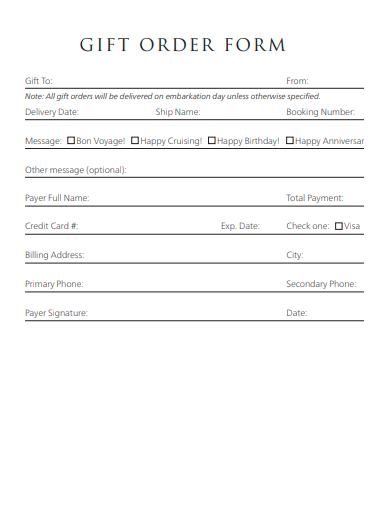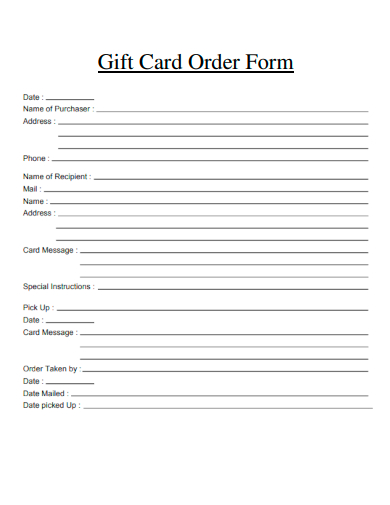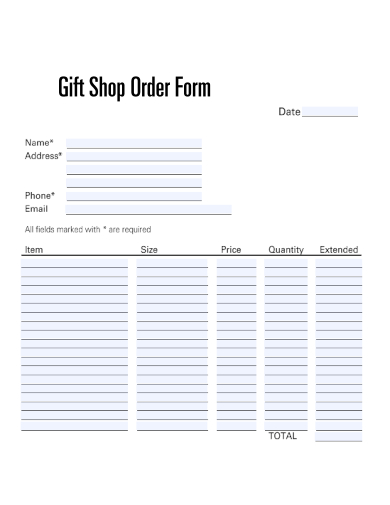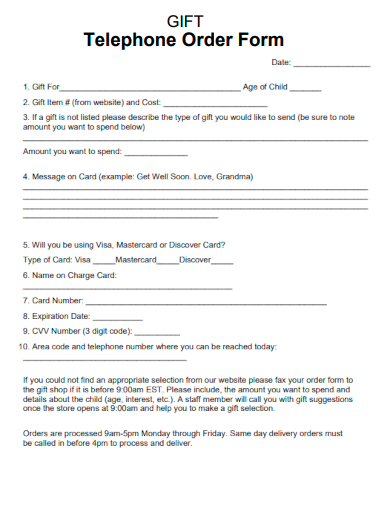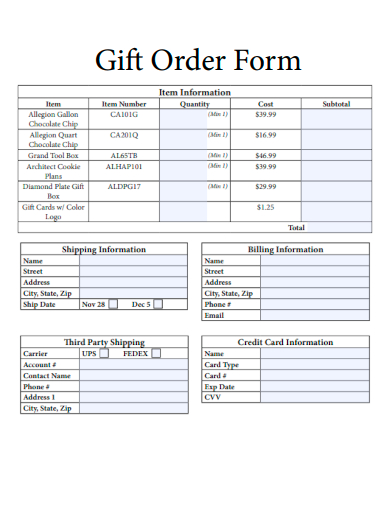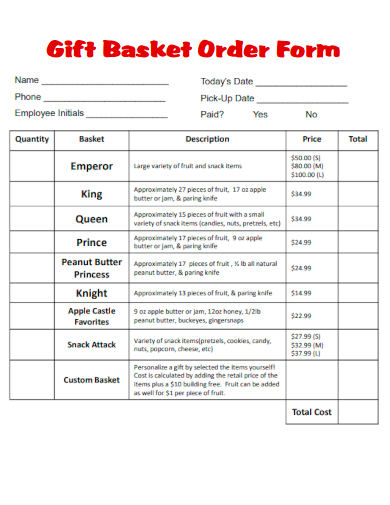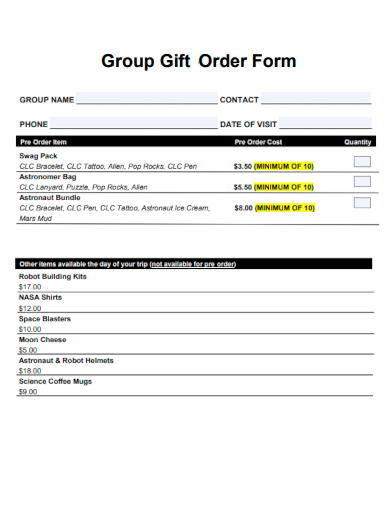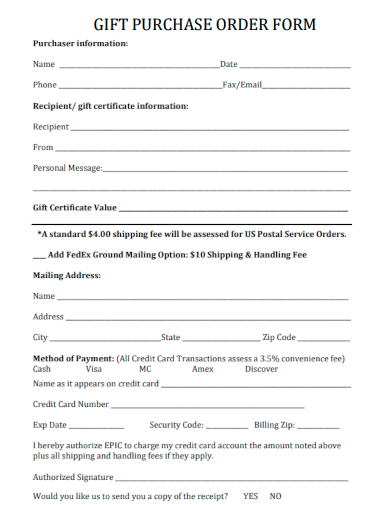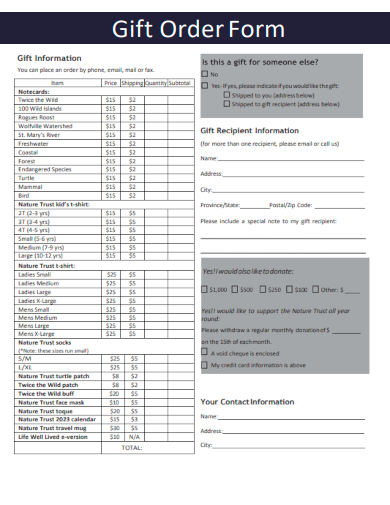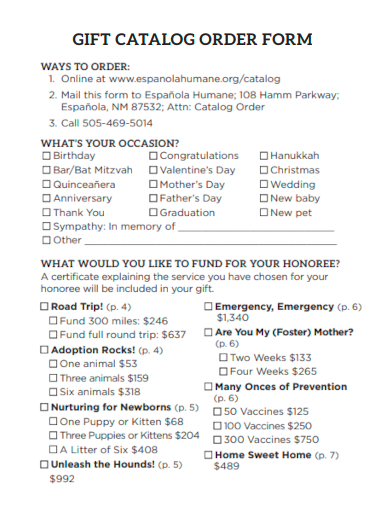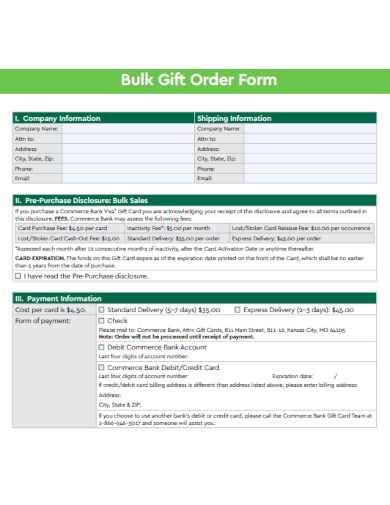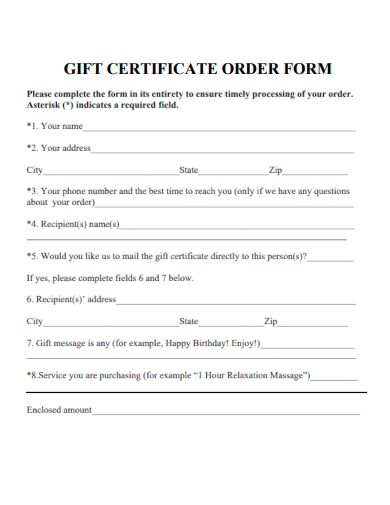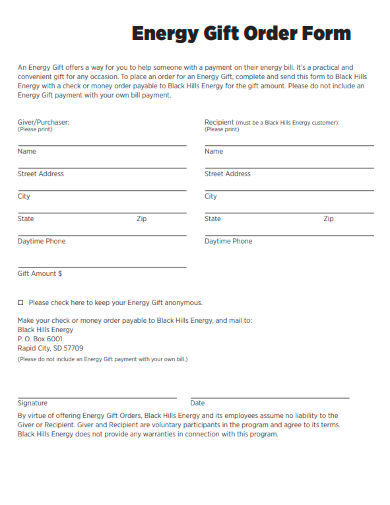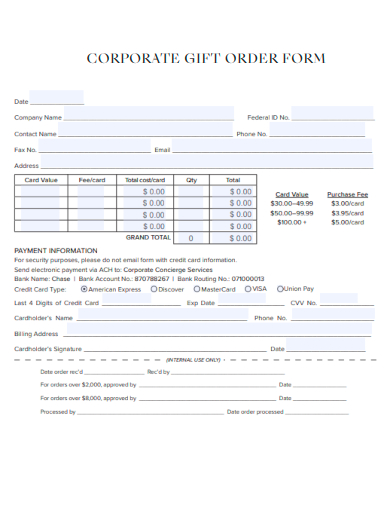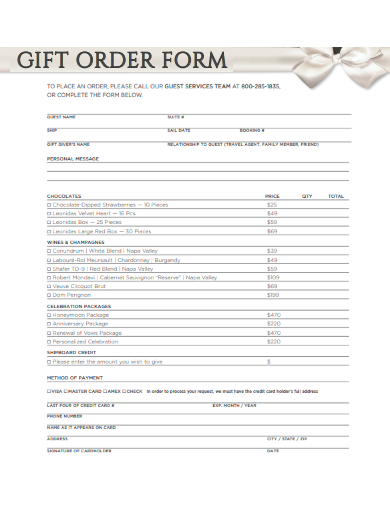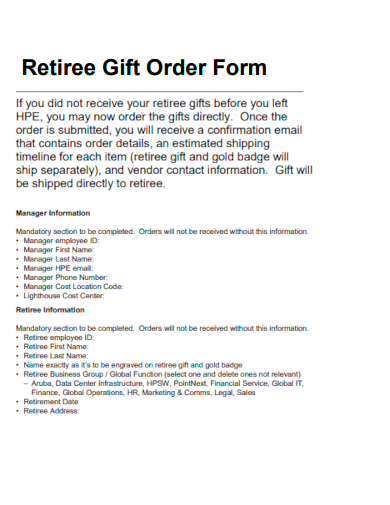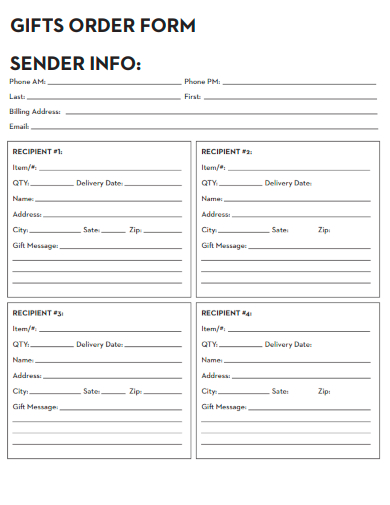Dive into our Sample Gift Order Form, designed to streamline your gifting process. Whether you’re hunting for the perfect birthday surprise, a heartfelt anniversary gesture, or a token of gratitude, order form has got you covered. Seamlessly blending user-friendliness with a wide array of options, this form ensures every gift choice hits the mark. Navigate the world of thoughtful giving with ease and make every moment memorable.
FREE 31+ Gift Order Form Samples
1. Sample Gift Order Form Template
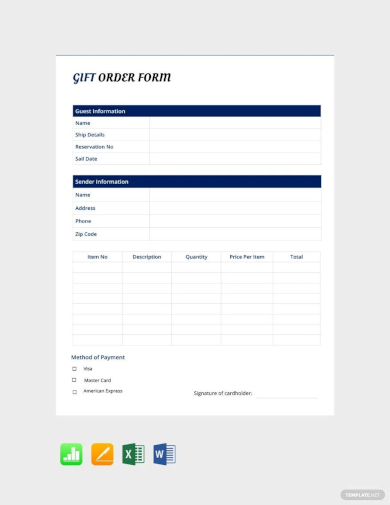
2. Order Form Template
3. Blank Order Form Template
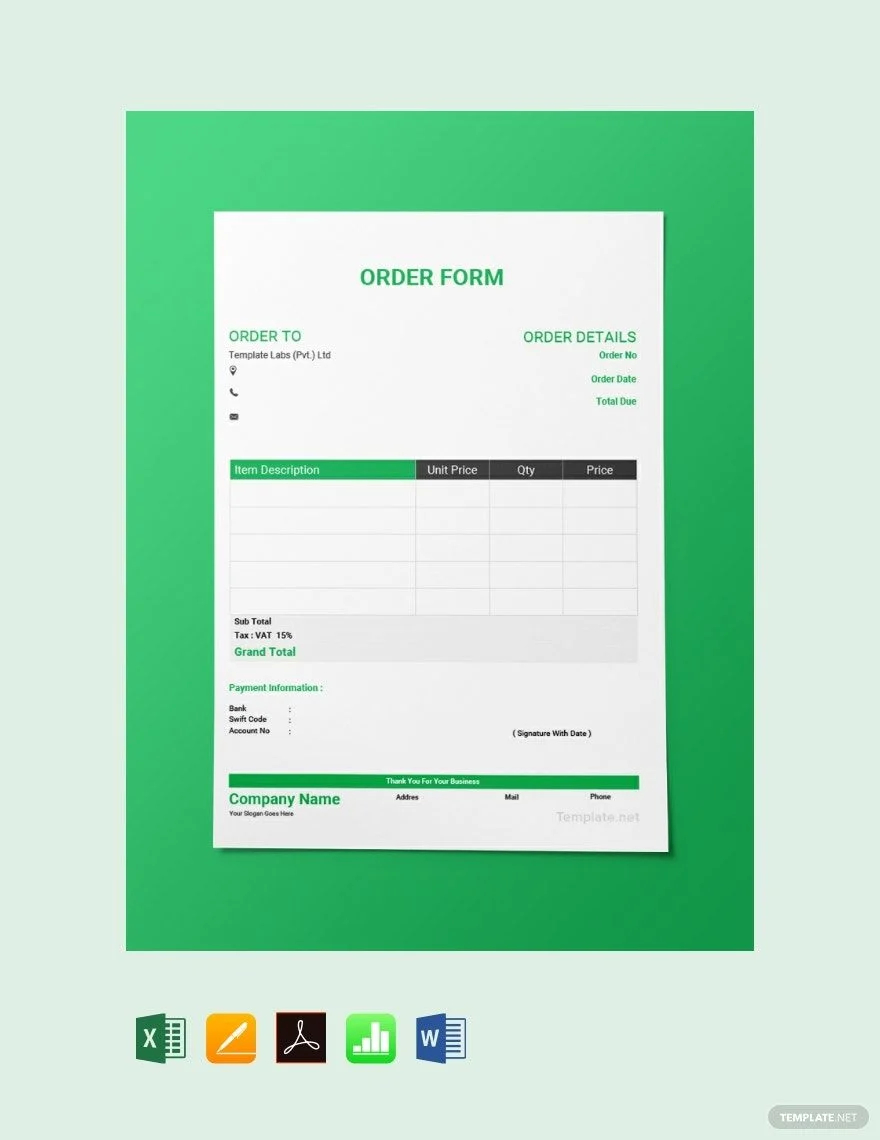
4. Sample Gift Order Form Blank Template
5. Sample Gift Card Order Form Template
6. Sample Gift Shop Order Form Template
7. Sample Gift Telephone Order Form Template
8. Sample Gift Order Form Basic Template
9. Sample Gift Basket Order Form Template
How to Create an Order Form?
Before diving into the technicalities, it’s vital to understand what an order form is. At its core, an order form is a document used to collect specific information about a purchase. This can range from product details and quantities to buyer’s information and payment details.
Gathering Necessary Information
Begin by listing down the essential details you’d need from a customer. Common fields include:
- Name of the product or service
- Price
- Quantity
- Buyer’s name
- Shipping/billing address
- Contact details, such as email and phone number
- Payment details
Choose a Medium
Decide whether your order form will be digital (like a website or an app) or physical (like a printed form). For digital forms, there are numerous tools and platforms, such as Google Forms or specialized e-commerce platforms like Shopify or WooCommerce. If you’re going for a printed version, software like Microsoft Word or Adobe Acrobat can be used to design and print.
Designing the Form
This step involves creating a layout. Ensure it’s clean and intuitive. Group related fields, use legible fonts, and provide clear instructions. If it’s a digital form, consider integrating dropdown menus, checkboxes, or radio buttons for easier navigation. Always remember, a user-friendly design can drastically improve completion rates.
Incorporate Validation
For digital forms, add validation to fields to prevent errors. For instance, ensure the email field accepts only valid email formats. Validation not only ensures you receive the correct data but also helps guide users through the form filling process.
Include Essential Policies
Always add necessary terms and conditions, return policies, or privacy policies, especially if payment details are being captured. This step builds trust and sets clear expectations with the customer.
Testing the Form
Before making your order form public, run a few tests. This helps in ironing out any kinks or flaws in the process. If it’s a digital form, fill it out yourself or ask colleagues to do so, ensuring all functionalities work as expected.
What is the Purpose of an Order Form?
Order forms primarily exist to facilitate a smooth and efficient purchasing process. By presenting all necessary fields in a structured manner, they guide customers through providing all the necessary details without confusion or oversight.
Detailed Record Keeping
For businesses, order forms act as a record of transactions. They can be used to track inventory, monitor sales trends, recognize frequent buyers, or even for accounting purposes. Having a structured format makes it easier to maintain, search, and analyze records over time.
Building Customer Trust
A well-designed order form, with clear instructions and policies, helps build trust. When customers know what information they’re providing and why, and when they can see terms and conditions clearly laid out, they feel more secure in their purchasing decision.
Facilitating Multiple Orders
Order forms allow customers to purchase multiple items or services in one go. This bulk ordering can lead to increased sales and also allows businesses to upsell or cross-sell related products efficiently.
Capturing Essential Data
Apart from basic transaction details, order forms can also be used to gather additional data about customers. Preferences, feedback, or even demographic details can be incorporated into order forms, providing valuable insights for business strategies and marketing campaigns.
Reducing Errors
With a structured and validated order form, there’s a lower chance of errors in order capturing. Automated digital forms, in particular, can prevent common issues like product mismatches, incorrect quantities, or wrong pricing.
Enhancing Efficiency
By eliminating the need for back-and-forth communication or clarifications, order forms enhance efficiency for both customers and businesses. Customers enjoy a quick, clear purchase process, while businesses benefit from streamlined operations and reduced administrative overhead.
Remember, while the format or medium of order forms may change, their purpose remains consistent: to simplify, streamline, and secure the purchasing process for both parties involved.
10. Sample Group Gift Order Form Template
11. Sample Gift Purchase Order Form Template
12. Sample Gift Order Form Formal Template
13. Sample Gift Catalog Order Form Template
14. Sample Bulk Gift Order Form Template
15. Sample Gift Certificate Order Form Template
16. Sample Energy Gift Order Form Template
17. Sample Corporate Gift Order Form Template
18. Sample Gift Check Order Form Template
19. Sample Gift Order Form Standard Template
20. Sample Retiree Gift Order Form Template
21. Sample Gift Order Form Sender Info Template
Different Types of Order Forms
In today’s dynamic business world, order forms have diversified to cater to various needs, ensuring efficiency and effectiveness in different contexts. Understanding these types is essential for businesses to determine which best suits their operations. Here’s a deep dive into the various kinds of order forms prevalent today.
Product Order Forms
This is perhaps the most common type of order form. It’s used by businesses that sell physical products. These forms usually capture product specifications (like size, color, and model), quantity, price, and sometimes even delivery preferences. Retailers, manufacturers, and wholesalers often use product order forms to streamline their sales processes.
Service Order Forms
Service-oriented businesses, like consultancies, repair services, or event planners, use service order forms. These typically capture the type of service required, special requests, date and time preferences, and often the duration or extent of the service.
Subscription Order Forms
With the rise of the subscription economy, these forms have become increasingly prevalent. They’re used by businesses that offer ongoing services or products at regular intervals. Subscription order forms usually capture frequency (monthly, quarterly, annually), preferred payment method, and renewal preferences. Magazines, software-as-a-service (SaaS) platforms, and box subscription services are common users.
Work Order Forms
Work order forms are more internally oriented. They’re used by businesses to formalize requests within their organization. For instance, a department may raise a work order form to request maintenance services or IT support.
Purchase Order Forms
This is a formal document sent from buyers to sellers specifying the details of the products or services they wish to purchase. It acts as a contractual stance between the buyer and seller before the formal invoice is generated. It’ll list quantities, agreed prices, delivery dates, and other terms of sale.
Standing Order Forms
Standing order forms are used by businesses and individuals to set up regular, fixed payments from their bank account to another account. They’re often used for recurring transactions, like rent or loan repayments.
Blanket Order Forms
These forms allow businesses to order large quantities of a product to be delivered in several smaller shipments over time. They’re often used when storage space is an issue, or when products are needed on an ongoing, regular basis.
Return Order Forms
In instances where a customer or business needs to return products, they’d use a return order form. This form captures reasons for the return, the condition of the product, original purchase details, and preferred actions (like refund, replacement, or repair).
Online Order Forms
With e-commerce booming, many businesses now use online order forms. They’re digital, ensuring a seamless online shopping experience. They capture similar details to product order forms but are designed for online interfaces, often with integrated payment gateways.
Custom Order Forms
For businesses that offer bespoke or custom-made products or services, custom order forms are essential. These forms allow customers to specify their exact requirements, preferences, and sometimes even design elements.
Each of these order forms serves specific purposes and industries. Regardless of type, the main objective remains consistent: to facilitate a streamlined, efficient, and clear ordering process for both parties involved.
Related Posts
Sample Sworn Affidavit Forms
Vehicle Inspection Forms Samples & Templates
Sample Employee Advance Forms
Sample Child Travel Consent Forms
Sample Testimonial Request Forms
Sample Employee Details Forms
Sample Divorce Forms
Sample Attestation Forms
Employee Performance Appraisal Form Templates
FREE 9+ Sample Presentation Evaluation Forms in MS Word
FREE 10+ School Admission Form Samples & Templates in MS Word | PDF
FREE 30+ Patient Consent Form Samples in PDF | MS Word
FREE 10+ Sample Sign Off Form Templates in PDF | MS Word
FREE 11+ Sample Medical Consultation Forms in PDF | MS Word
FREE 8+ Sample Donation Forms in PDF | MS Word
